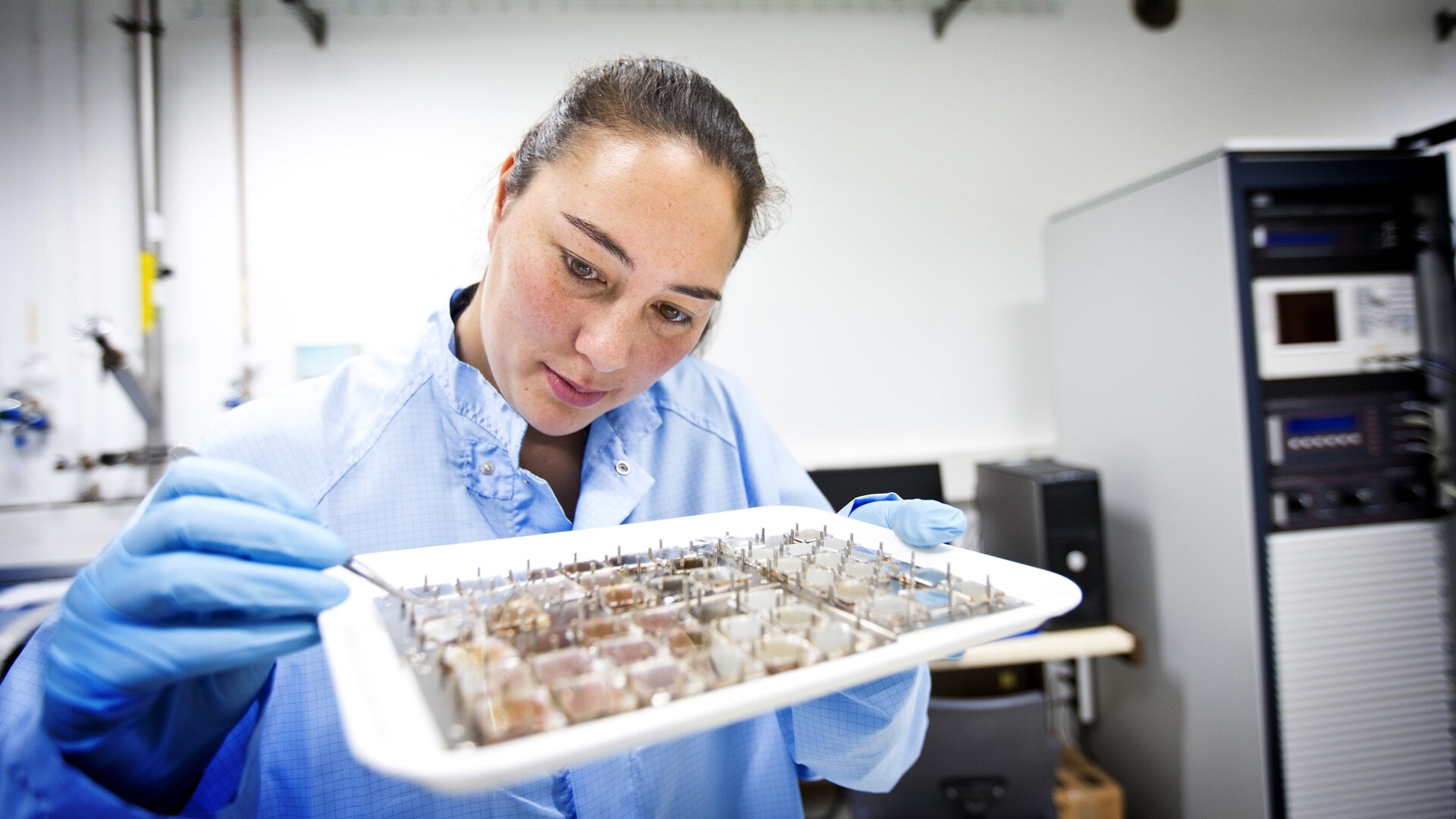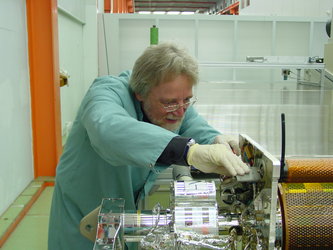Sticky test for solar cells
ESA engineer Mei Mei Stienstra holds a tray of glass samples that have been exposed to simulated space conditions for more than a year. The test campaign assessed a new type of European-made adhesive to keep protective cover glass stuck in place on solar cells.
The testing – taking place at the Materials and Electrical Components Laboratories in ESA’s technical centre ESTEC, based in Noordwijk, the Netherlands – involved long-duration space simulations lasting for upwards of 10 000 hours to guarantee the reliable operation of solar cells.
Solar power is the lifeblood of satellites, but the solar cells relied on to produce it need protection from the harsh space environment.
To minimise the harmful effects of unfiltered sunlight and charged particles, all solar cells are covered by cover glass, typically just 0.1 mm thick. If a bare cell was exposed to the space environment it would degrade as much within a few days as a protected cell does in 15 years.
But the adhesive keeping cover glass and solar cell together must in turn perform well. For this testing, samples of the adhesive have been sandwiched between two layers of glass, which radiation penetrates through during the long-running simulation.
Any darkening observed is a measure of degradation which equals a loss of light transmission, resulting in turn in a reduced power output.
Testing for making
ESA's Materials and Components Laboratories performs tests concerning a question of central importance to the European space industry: what are the best materials and techniques with which to manufacture spacecraft?
Made up of around 15 separate experimental facilities overall, the Laboratories perform their space-focused testing and analysis applying an unrivalled combination of expert knowledge and specialised equipment.







